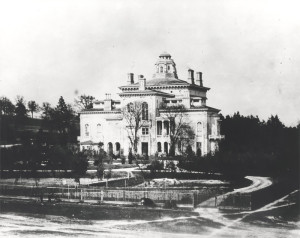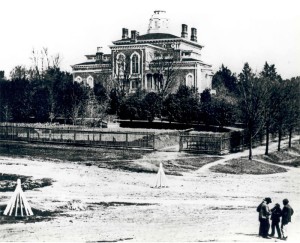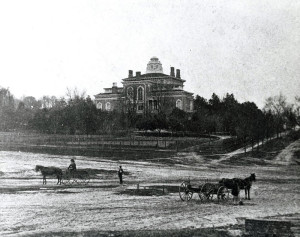Historic House
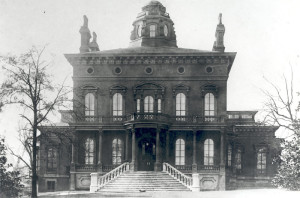 One of Georgia’s most historic houses and distinguished structures, the Johnston-Felton-Hay House in Macon was declared a National Historic Landmark in 1974. Construction began in 1855 and continued into 1859. The House was built in the Italian Renaissance Revival style, a marked contrast to the Greek Revival architecture of the antebellum period.
One of Georgia’s most historic houses and distinguished structures, the Johnston-Felton-Hay House in Macon was declared a National Historic Landmark in 1974. Construction began in 1855 and continued into 1859. The House was built in the Italian Renaissance Revival style, a marked contrast to the Greek Revival architecture of the antebellum period.
The 18,000-square-foot mansion spans four levels and is crowned by a two-story cupola. Commissioned by imaginative owners and constructed by the most skillful workers of the time, its technological amenities were unsurpassed in the mid-19th century. When constructed, the now historic house had hot and cold running water, central heat, gas lighting, a speaker-tube system, in-house kitchen, and an elaborate ventilation system.
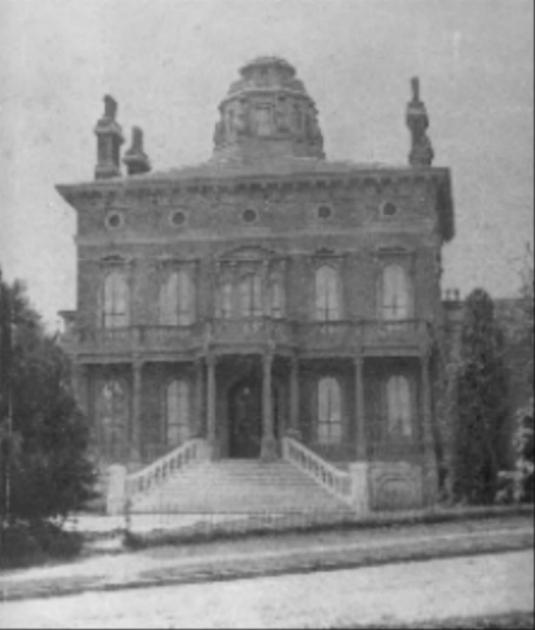 The Hay House is constantly undergoing research and restoration, while remaining open to the public, thereby showing visitors interesting and informative procedures. It is chiefly characterized by arches and curves, as opposed to the Greek Revival style which is composed mainly with straight lines. Symmetry is also fundamental to this style. The central block of the house is flanked by two wings which are identical, at least from the exterior. The two-story octagonal cupola gives the house a sense of vertical lift. The cupola serves as part of the ventilation system, acting as a chimney which helps to draw the hot air up and out of the house.
The Hay House is constantly undergoing research and restoration, while remaining open to the public, thereby showing visitors interesting and informative procedures. It is chiefly characterized by arches and curves, as opposed to the Greek Revival style which is composed mainly with straight lines. Symmetry is also fundamental to this style. The central block of the house is flanked by two wings which are identical, at least from the exterior. The two-story octagonal cupola gives the house a sense of vertical lift. The cupola serves as part of the ventilation system, acting as a chimney which helps to draw the hot air up and out of the house.
Only two families lived in Hay House over three generations. Most of the museum’s furnishings date from the Hay family’s occupancy (1926-1962). A few pieces are from the Johnston family (1860-1896), most notably the Eastlake-style dining room suite. The most important piece in the collection may be the 1857 marble statue, “Ruth Gleaning,” by American expatriate sculptor Randolph Rogers.
Originally the Johnston estate was composed of 3.8 acres bordered by Nisbet Avenue to the West, Spring Street to the East, Turnpike Road (presently Georgia Avenue), to the North, and Cherry Street to the South. The ginkgo trees, magnolias, and cedars date to the 19th century and are among the few surviving early plantings.
The Hay family added the driveway and brick gateposts. They also redesigned and replanted the grounds and added the lower garden and fish pond.
To view the museum tour hours, click here.

